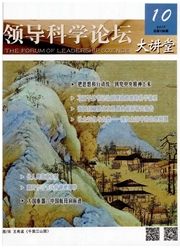

 中文摘要:
中文摘要:
随着经济发展和城镇化加速,“城市病”蔓延趋势已成事实。近年,我国西部地区城市在快速发展过程中同样面临着“城市病”的困扰。为客观评价西部城市的“城市病”状况,选取25个城市作为样本城市,根据研究假设构建“城市病”评价指标体系,综合运用主成分分析法和聚类分析法对“城市病”进行综合评价和分类,整体上将25个城市分为三类。同时,基于提取主成分的重要度有针对性地进行“病症”分析,主要包括人口拥挤、道路拥堵、资源短缺、公共服务供给不足等,其“病因”为政治功能的主导性,经济实力和政府治理能力弱化。因此,针对不同“城市病”类型,分别应用“管控型”治理,“防治结合”治理和“预防型”治理策略.
 英文摘要:
英文摘要:
With the development of economy ease" is spreading.In recent years,our western cities and acceleration of urbanization, there is a fact that "urban dis- also face troubles of "urban disease"in the process of rapid de- velopment.To objectively evaluate the condition of our western cities' urban disease,the author selects 25 cities and constructs evaluation indicator system for urban disease according to existing researches.Then,the author applies the methods of principle component analysis and clustering analysis to conduct a comprehensive evaluation and classifi- cation.The result is that 25 cities are classified 3 classes.Next,this paper pointedly analyzes "symptoms" based on the importance of principle components,including crowded population,traffic congestion,resources shortage,insuffi- cient supply of public service,etc.The causes are political function is dominant, economic strength and government' s managing ability is weakened.So, to different types of urban disease,we should respectively apply different strate- gies: "controlling'governance,"prevention-management"governance and "prevention"governance.
 同期刊论文项目
同期刊论文项目
 同项目期刊论文
同项目期刊论文
 期刊信息
期刊信息
